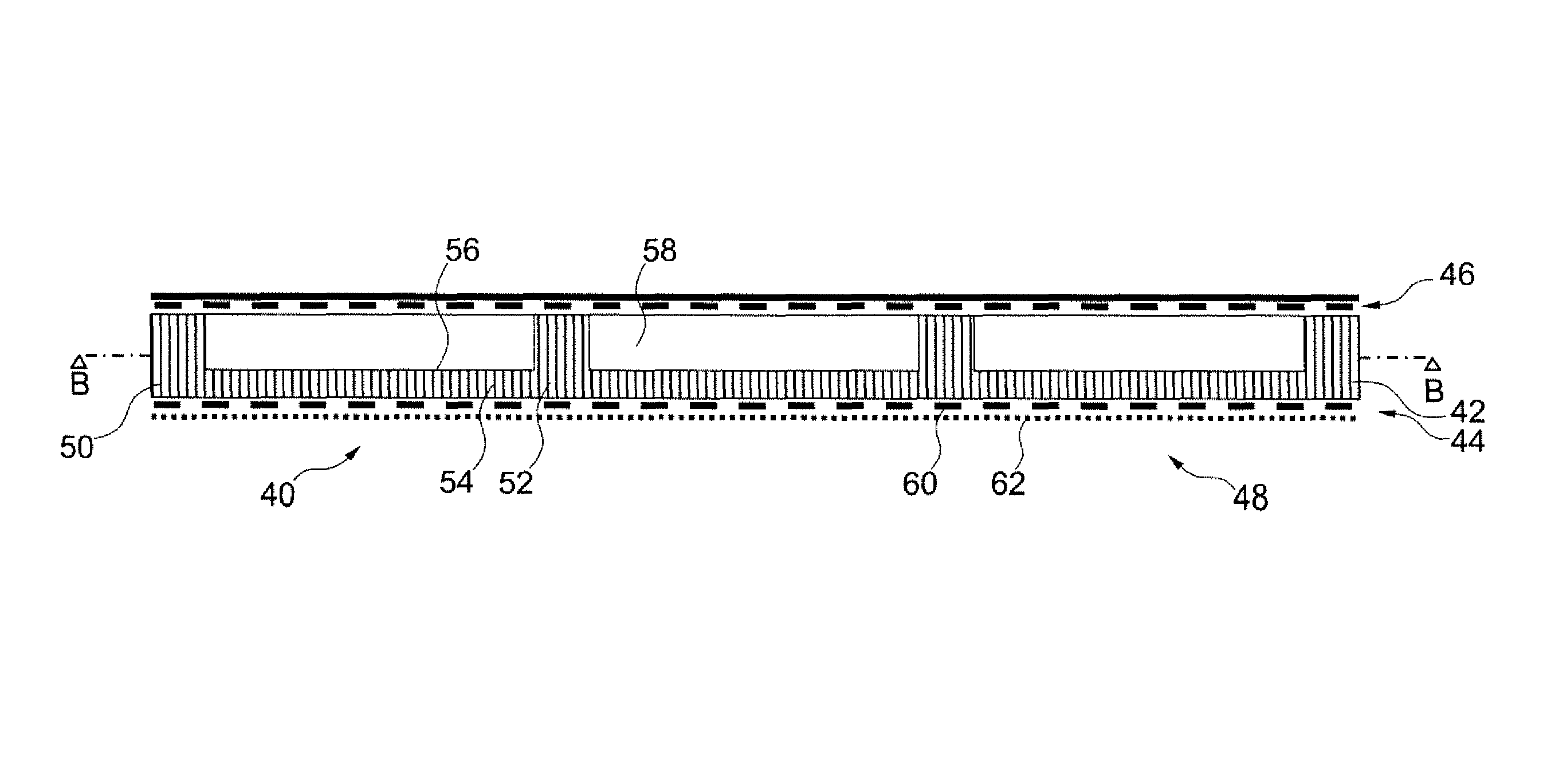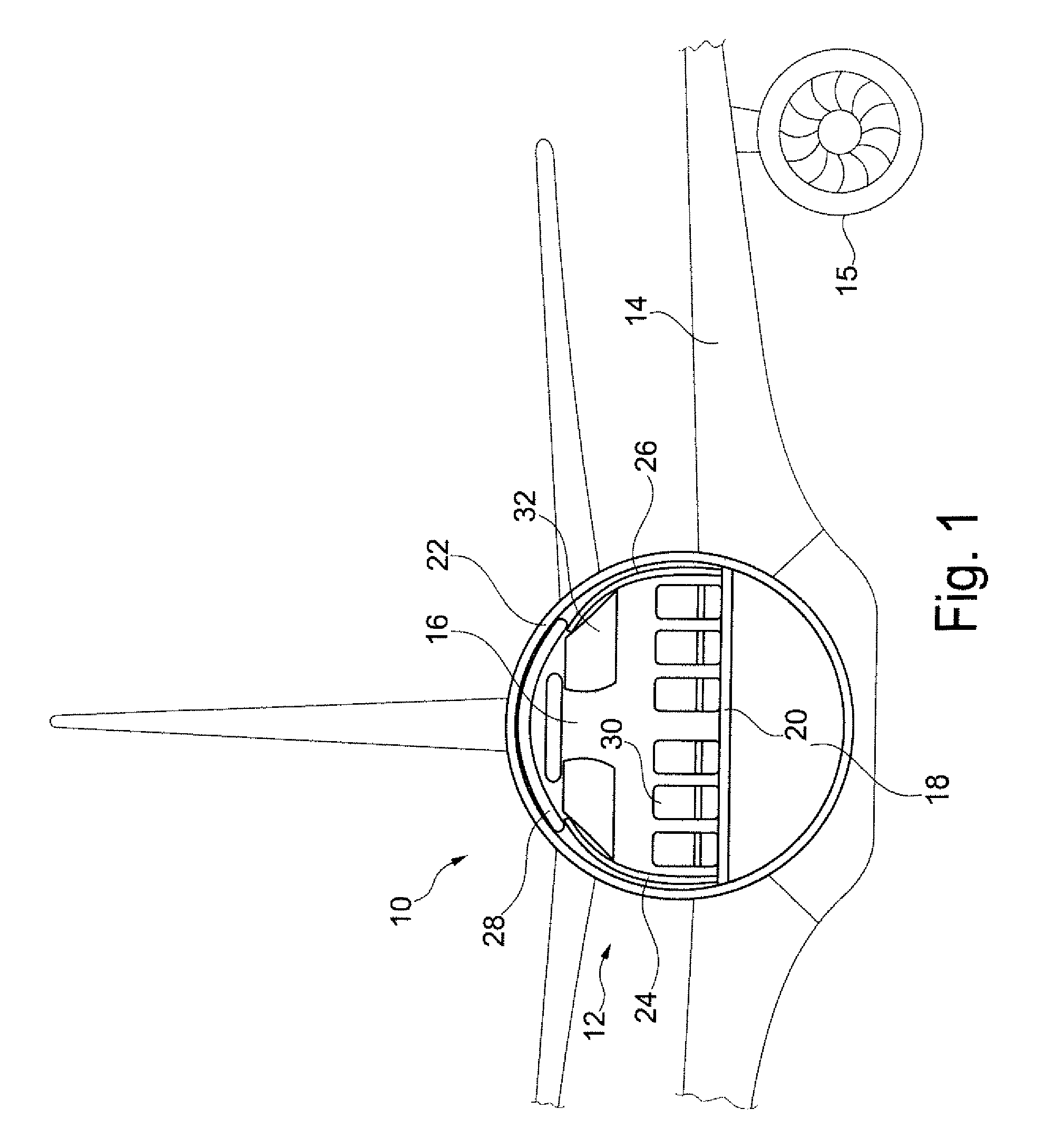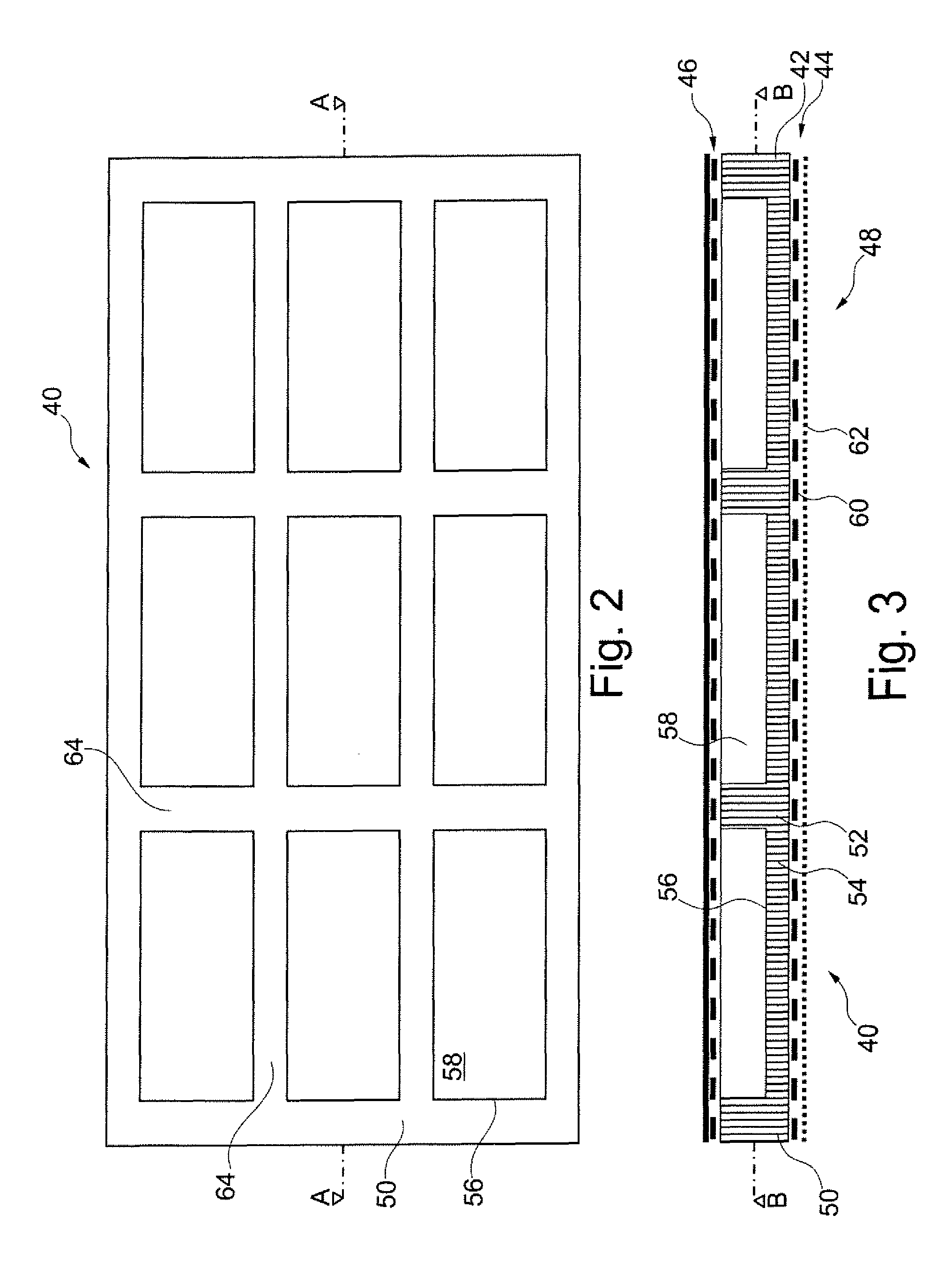Aircraft cabin panel with core recesses for acoustic absorption
a cabin and core recess technology, applied in the direction of airflow influencers, instruments, transportation and packaging, etc., can solve the problems of the weight cannot be used for acoustic insulation, and the inability to reduce the noise generated in the cabin itself, so as to improve the acoustic absorption characteristics
- Summary
- Abstract
- Description
- Claims
- Application Information
AI Technical Summary
Benefits of technology
Problems solved by technology
Method used
Image
Examples
Embodiment Construction
[0073]FIG. 1 shows an aircraft 10 with an aircraft fuselage 12 and two wings 14, each being laterally connected to said fuselage 12, with engines 15 being provided on the wings 14. FIG. 1 shows the aircraft fuselage 12 in a section view across its longitudinal axis. The aircraft fuselage 12 is divided, by a horizontally extending floor 20, into an upper cabin region 16 and a freight region 18, arranged below. The aircraft fuselage 12 further comprises an essentially circumferential exterior skin 22 of the aircraft, which exterior skin 22 is attached to an aircraft fuselage structure (not shown in detail). In simple terms the aircraft fuselage structure comprises a type of load-bearing structure made of frame elements and stringers, thus ensuring a stable construction to take up the external and internal loads.
[0074]In the cabin region 16, which is arranged above the floor 20, along the exterior wall 22 there are lateral cabin lining elements 24, 26 as well as an upper cabin lining 2...
PUM
| Property | Measurement | Unit |
|---|---|---|
| acoustically transparent | aaaaa | aaaaa |
| thickness | aaaaa | aaaaa |
| flow resistance | aaaaa | aaaaa |
Abstract
Description
Claims
Application Information
 Login to View More
Login to View More - R&D
- Intellectual Property
- Life Sciences
- Materials
- Tech Scout
- Unparalleled Data Quality
- Higher Quality Content
- 60% Fewer Hallucinations
Browse by: Latest US Patents, China's latest patents, Technical Efficacy Thesaurus, Application Domain, Technology Topic, Popular Technical Reports.
© 2025 PatSnap. All rights reserved.Legal|Privacy policy|Modern Slavery Act Transparency Statement|Sitemap|About US| Contact US: help@patsnap.com



